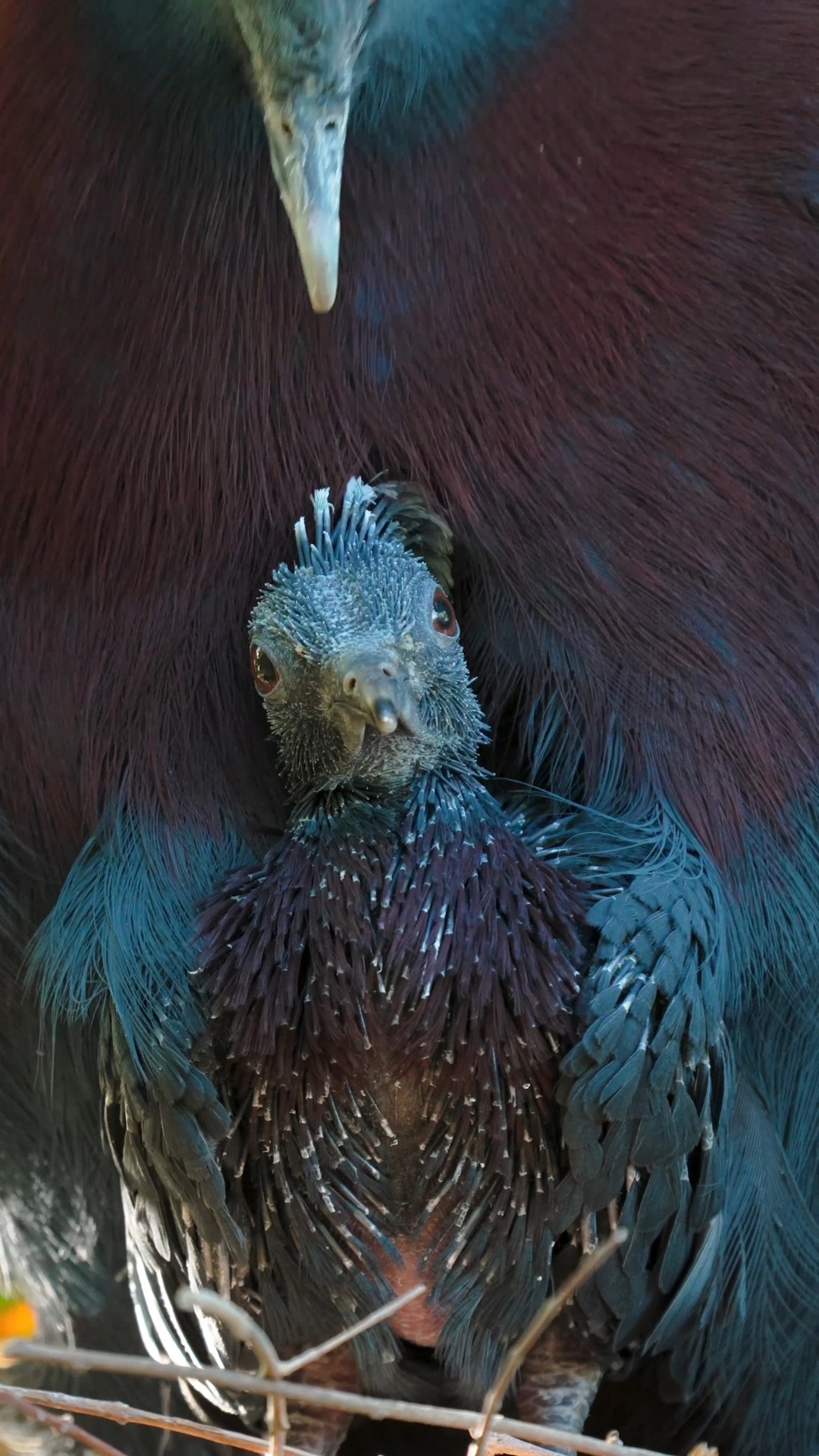- New Guinea’s crowned pigeons and their distinctive ground-dwelling behavior and habitats.
- The significance of the crowned pigeon population at the Safari Park’s Wings of the World Aviary.
- Conservation efforts surrounding crowned pigeons and their ecological importance.
- Detailed characteristics of crowned pigeons, including physical features and behavioral traits.
- The impact of human activity on their natural habitats and the necessary conservation actions.
Crowned pigeons, with their regal crest of feathers and striking appearance, are an extraordinary avian group native to the lush landscapes of New Guinea. Unlike typical pigeons that flutter through urban skies, these remarkable birds spend most of their time on the ground, making their homes in the dense swamps and palm forests that characterize their natural habitat. Their preference for terrestrial life is an intriguing aspect that differentiates them from other pigeon species, emphasizing their unique adaptation strategies in a challenging environment.
Visitors to the Safari Park have the privileged opportunity to observe these avian royales at the Wings of the World Aviary, where a royal flock has made its home. This exhibit offers an immersive experience, allowing guests to witness the crowned pigeons’ elegant ground-dwelling lifestyle up close. Through careful habitat simulation and enriching environments, the aviary showcases the species’ natural behaviors and physical grandeur. The presence of this flock in the park underscores the importance of managed care environments in avian conservation and education, serving as a tangible link between human curiosity and the wonders of nature.
From a conservation perspective, crowned pigeons are an essential subject of ecological preservation efforts. As inhabitants of forested ecosystems, their existence plays a crucial role in the broader environmental health of their native regions. These pigeons contribute to seed dispersal and overall forest diversity, making their conservation vital for maintaining ecological balance. Concerns arise, however, from the degradation of their natural habitats due to deforestation and other human activities. Efforts by conservationists worldwide aim to safeguard these habitats through sustainable practices, legislation, and community engagement. Highlighting the crowned pigeon’s plight can galvanize further action and support from a global audience committed to wildlife conservation.
In examining the physical and behavioral traits of the crowned pigeon, several remarkable features come to light. Known for their grand plumage, these pigeons boast an impressive crown of lace-like crest feathers. This striking adornment serves not only as a visual spectacle but may also play a role in social interactions amongst flocks, potentially aiding in mate selection and hierarchies. Beyond their aesthetic qualities, crowned pigeons are robust birds, with a weight reaching up to four pounds, quite substantial compared to most pigeon species. Their diet consists mainly of fruits, seeds, and small invertebrates, which they forage on the forest floor, emphasizing their versatile feeding habits adapted to terrestrial life.
While crowned pigeons exist in a relatively isolated region, human influence significantly impacts their natural habitats. Deforestation, driven by logging and land conversion for agriculture, poses one of the most severe threats to these birds. As their forest homes shrink, so too does their population, necessitating urgent conservation action to mitigate these impacts. Protecting large swathes of forest is critical, alongside initiatives aimed at promoting sustainable land-use practices and raising awareness about the crowned pigeons’ plight within local communities and beyond. By prioritizing these measures, we can hope to preserve not only the crowned pigeon but the dynamic ecosystems they inhabit.
Crowned pigeons are more than just another bird species; they symbolize the intricate balance of Earth’s ecosystems and the fragility of the natural world in the face of human encroachment. Their presence at the Wings of the World Aviary offers a unique opportunity for public engagement, highlighting the importance of biodiversity and conservation. By bringing attention to these remarkable birds, we foster a deeper appreciation for the natural world and inspire actions that can lead to tangible conservation outcomes. As ambassadors of their kind, crowned pigeons at zoological institutions play a pivotal role in education and conservation, ensuring that awareness and protective efforts continue to expand and evolve for the benefit of all living things.
*****
Source Description
Not your average pigeons 🐦 👑
Bend the knee because there’s a new crowned pigeon chick in town. Despite their fabulous feathering, crowned pigeons spend most of their time on the ground and are native to the swamps and palm forests of New Guinea. Guests can visit the Safari Park’s royal flock at the Wings of the World Aviary.


